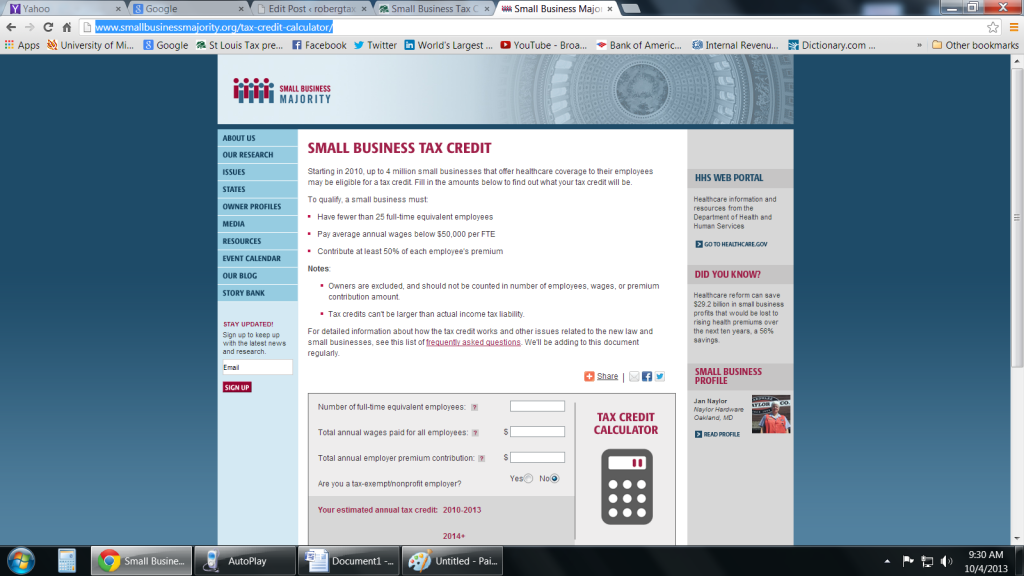
Editor: Thank you Wendy and Jeff for inspiring such a great post! Jan and myself are deeply vested in the decisions made by our White House. We hope to bring clarification to everyone in the like on this confusing but pertinent ruling. Happy Fourth of July!
Part 1: How Much is the Penalty for Not Having Health Insurance?
In less than an hour after the Supreme Court announced their ruling that Obamacare was Constitutional, my phone started ringing with people asking me questions. I’ll be honest – I wasn’t prepared for that. But the one caller that really got to me said, “Make it simple so that I can understand it.” Her big question was – How much is it going to cost me? So for her – I’m going to try my best to explain it.
Today I’m going to talk about the mandate part – that is – how much tax you’re going to have to pay if you don’t have health insurance. (And yes, it is a tax because the Supreme Court says so. This is a point people argue about but today I’m skipping to the math.)
First thing to know: You aren’t required to have health insurance until 2014, so if you’re reading this in 2012 you’ve got time to figure things out. The actual tax won’t have to be paid until the next tax season which would be in April of 2015. That should give you a time line to work with.
The second issue is – who’s going to have to pay? If you read the law it says non-exempt US citizens and legal residents. This is another part where everybody goes all nutso about illegal aliens not having to pay the health insurance tax. While that’s a genuinely valid concern, I’m not going to touch that today. I’m looking at those of us who are citizens and legal residents – what are we doing? Fair enough for now?
Okay – so what does that “non-exempt” part mean? Here, anybody whose income is below the filing threshold is exempt from having to pay the tax for not having health insurance. Those “non-exempt” people are the ones who have to pay. Filing threshold is the amount of money you make where you have to file your income taxes. Say you’re single, for 2012 the IRS says the filing threshold is $9,750 so if you make less than that you don’t have to have insurance. If you’re married, the filing threshold is $19,500 for 2012. The filing threshold usually goes up a little bit every year so it will be different for 2014, but probably not by much.
So those incomes are pretty low, so what happens to the single person who makes $25,000 a year?
This is where it gets kind of tricky. They compute it as a formula. For 2014 the penalty for not having health insurance will be $95 or 1% of your income over the filing threshold – whichever is greater.
So let’s look at the single guy who makes $25,000 a year. Take his income of $25,000 and subtract the filing threshold (I’m going to use 2012 numbers because I have those) 25,000 – 9,750 = $15,250. Then you multiply that by one percent or .01. That gives you $152.50. Since the $152 is a bigger number than the $95, that’s what he’d pay.
Are you still with me? Now if the married family made the same amount, they’d pay less because they have a different filing threshold. The formula would look like this:
25,000 – 19,500 = $ 5,500 (income minus threshold = excess household income)
5500 x .01 = $ 55 (excess household income times percentage = tax)
Oopsies – except here the number is less than $95, so the family would have to pay the $95 minimum anyway. The $95 is a de minimis amount for those of you who may be involved in law or mathematics.
So that’s how you compute it for 2014. But in 2015, the numbers go up. In 2015, the minimum is now $325 and the percentage of excess household income goes up to 2%.
(Okay, excuse the opinion here but who in the heck called it excess household income? If you’re married and only making $25,000 a year, you ain’t got any excess household income. Just sayin’. I understand the tax, I understand what they’re doing, but excess household income was a stupid choice of words! Okay I’m done.)
Let’s stick with our single guy making $25,000 a year. (It would be nice if he got a raise in real life, but it keeps the math easier for this if he doesn’t.) I’m not changing the thresholds either, only the healthcare tax.
Now the formula looks like this:
25,000 – 9,750 = $ 15,250
15,250 x .02 = $305 But now the minimum health insurance payment is $325 so the bite is a little harsher.
For 2016 – the minimum penalty will be $695 or 2.5% of your income. Using the same numbers from before:
15,250 x .025 = $ 381
So by 2016, our single guy will be paying a $695 tax for not having health insurance.
Now just to put a different perspective on it, let’s say our young man here gets a nice promotion and is making $100,000 by 2016, what happens to him then?
100,000 – 9,750 = $90,250 excess household income
90,250 x .025 = $2,256 that’s the tax he’ll pay for not having health insurance.
So if you want to get a good estimate of what your tax bill will be for not having health insurance, you’ll need to follow three steps:
1. Figure your excess household income
your income – your filing threshold = excess household income
2. Take your excess household income and multiply it by the percentage in the table for whatever year you’re looking at.
3. Compare the number you came up with to the minimum amount listed in the table. You’re going to pay the higher amount.
Here’s the table:
Year minimum penalty percentage excess household income
2014 $ 95 1.0%
2015 $325 2.0%
2016 $695 2.5%
After 2016 it will be indexed for inflation.
Filing thresholds for 2012 (that’s the latest I’ve got)
Single: $9,500
Head of Household: $12,450
Married Filing Jointly: $19,500
(Note: the filing thresholds are higher for people over 65 – but if you’re over 65 you should qualify for Medicare and this won’t be an issue for you. Also, these amounts go up by $3,800 (the dependent exemption amount) per 1st and 2nd child.
On Friday I’ll address some of the other taxes associated with the Health Care Act. I think I’ve already thrown enough math at you for one day now. Besides, this stuff makes me dizzy!







